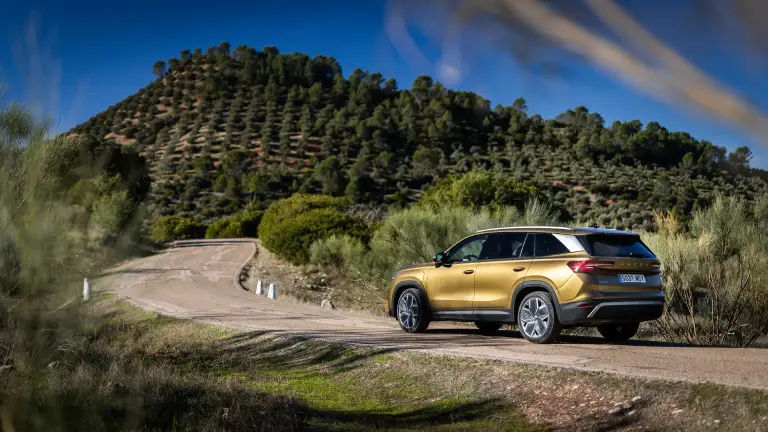Smarter and smarter
It is the camera, together with other data sources, that makes it possible for cruise control to perform other functions. Predictive adaptive cruise control needs image data from the camera, but also map data. It can react to the current speed limits, it knows in advance where a built-up area starts, and where a curve is. The control logic then calculates when it needs to start reducing speed to ensure the car safely negotiates the bend or enters the built-up area at the permitted speed.
 Predictive adaptive cruise control cooperates with the navigation system and the camera that reads traffic signs.
Predictive adaptive cruise control cooperates with the navigation system and the camera that reads traffic signs.
Another possible functional extension of cruise control is cooperative adaptive cruise control. This has all the functionality of predictive ACC, but also receives data from the vehicle-to-vehicle and vehicle-to-infrastructure communication systems. As a result, the cruise control can receive a warning of a traffic jam ahead and start slowing down before the vehicle’s sensors see the stationary traffic. It can also handle two vehicles driving comfortably in tandem, if the cars can communicate. There are only a few cars that can do this at the moment – the systems are still being developed and we will see them in Škodas in the future.
This is a testament to how quickly things are now changing in what was previously a relatively stable cruise control landscape. “There is no extra legislation for cruise control, for example, but Euro NCAP is already testing it in detail and assessing how it reacts to specific situations,” Sychrovský points out. This is why carmakers are keen to continue to improve cruise control. “We want to make it more reliable, more robust, easier to use and safer,” he says. Škoda uses the solution that’s part of the Volkswagen Group’s platform, but the Czech carmaker has to deal with both the installation of all the necessary components and rigorous testing. And also the cruise control management system.
 Cruise control adjuster in the Škoda Scala
Cruise control adjuster in the Škoda Scala
According to Sychrovský, the cruise control future holds both improvements and more reliable functions (for example, the ability to react to red lights or stop and give way signs is in the pipeline). Since predictive adaptive cruise control can already take care of speed on its own and can handle some traffic situations where the car has to slow down or accelerate, less driver intervention is required and there is therefore no need for complex controls,” Sychrovský says, offering a glimpse into the future, where there will be greater use of connectivity and communication between vehicles and autonomous driving in general.





































